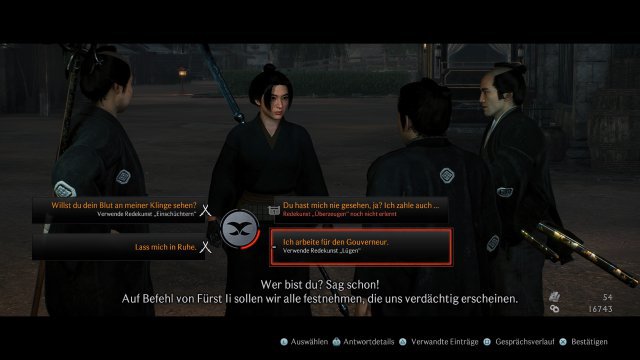The genre name “Open World Soulslike” Until recently, only one game could actually be written on the packaging: Elden Ring. But also on Team Ninjas Rise of the Ronin This description is accurate – at least in a certain way.
Advertisement
No matter if you already Nioh or Wo Long: Fallen Dynasty played or Rise of the Ronin would represent your entry into the developer's game portfolio: Some of you are probably thinking about it Samurai adventures to be used as a bridge until the release of the Elden Ring DLC Shadow of the Erdtree. We have the compared the two titles with each other and reveal how much they actually have in common – or whether the genre label is misleading.
Rise of the Ronin vs. Elden Ring: What kind of story can you expect?
Just like its spiritual predecessors, Rise of the Ronin also tells its story classic with lots of cutscenes and distinctive dialogues. This time the model was based on real historical events, more precisely the so-called ones Meiji Restoration in Japan, which meant a major upheaval for the country. As an elite warrior, you stand between the fronts and have to decide whether you support the shogunate in its pact with the western powers and the opening of the country, or support the rebels in order to cut off Japan again.
Cutscenes, dialogue and decisions: Rise of the Ronin uses conventional means to convey its story.
Advertisement
Decisions in dialogues and the choice of quest givers influences the course of the story, even if one sticks more or less roughly to the historical facts. Otherwise, the story is mostly straightforward if you follow the clearly recognizable main missions; have to here no puzzles suggested where we're going next or what it all even means.
Things look completely different in Elden Ring: The cryptic story everything about the intermediate land and its inhabitants is only packed into a few cutscenes, which are mostly only used in boss fights. There are rarely clear instructions here; If you don't know where to go, you should listen carefully to the available NPCs – or you can just ride off wildly. More information about the history of the game can be found in the item descriptions, as is typical from Software.
What does the open world have to offer?
One open world, which you can explore freely on the back of a horse (or a horse-like spectral steed)? Well, that's what Rise of the Ronin and Elden Ring have in common. To be fair, the similarities more or less stop there: Team Ninja's samurai adventure serves you up conventional open worldhow you might see them Assassin's Creed or Horizon Zero Dawn knows, and of course that means: lots of markers as far as the eye can see.
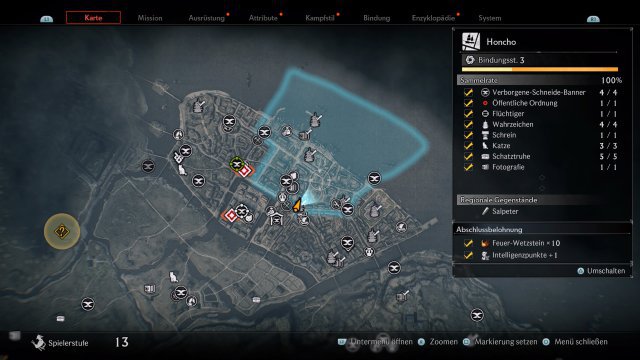
You'll look for puzzles and secrets in vain in Rise of the Ronin. To do this, you can focus on the activities that really interest you and advance your character.
19th century Japan is full of side activities, all of which can be conveniently located by marking them on the map and reveal in advance what awaits you there: a cat in need of petting, for example, a shrine in need of prayer or a bandit camp in need of a beating. Because the world of Rise of the Ronin is otherwise just a beautiful backdrop, exploring and riding around is only worthwhile for serious video game tourists – everyone else should quickly resort to fast travel Shopping list full of junk tick off.
In Elden Ring, however, you are on your own. Treasure chests and quest givers need to be found just as much as boss fights or dungeons: only the structures of the landscape can be seen on the map and the places of grace found, which roughly show the way to the next one; You have to set the markings yourself if you want to find exciting locations again later. In order to navigate through the intermediate lands, you should leave the map as a map and bring out your thirst for research. The ruins up there look exciting! And is that a sleeping dragon over there?
What are the side quests?
The side quests are just like the story: Rise of the Ronin spell out exactly what it wants from you, reveals before your mission how many experience points and what other rewards you will get and where you have to start, carry out the mission and then complete it. On the one hand, this is practical: for example, you can explicitly search for the imported books that we provide you with our tips and tricks article for Rise of the Ronin Definitely recommend it, you can here easy to set priorities.
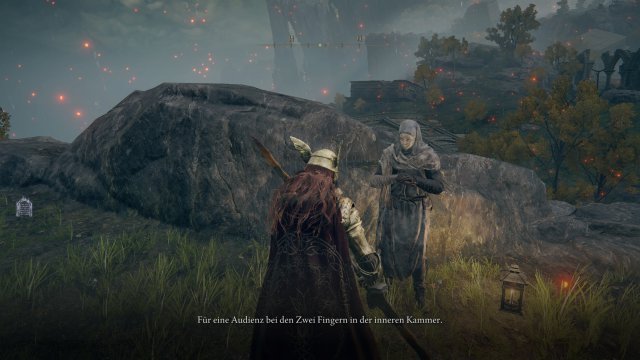
Sometimes the NPCs in Elden Ring actually make an effort to keep their quest instructions understandable. Most of the time not.
On the other hand, of course, there is a lack of mystery: you always know exactly what you are getting, This means there are no surprises. In Elden Ring, on the other hand, there are plenty of them, even if it can happen that you no longer find the quest giver because he has made himself comfortable in some cave after an evening around the campfire. In Rise of the Ronin you focus on the character missions and leave out the hard work, but both games have them quite exciting missions to offer that is worth pursuing in a playful and narrative way.
How does the combat system play?
Although the combat system of both titles takes place mostly in close combat, enemies have complex attack patterns and a stamina bar prevents you from releasing actions from the stack in continuous fire, there are definitely some differences between the battles in Rise of the Ronin and Elden Ring. First there is this different focuses of parry and evasion: Both are possible in both games, but because in Team Ninja's work you want to break your enemies' Ki bar, parrying is much more effective, while in Elden Ring diving out of the way is probably the preferred method of avoiding damage.
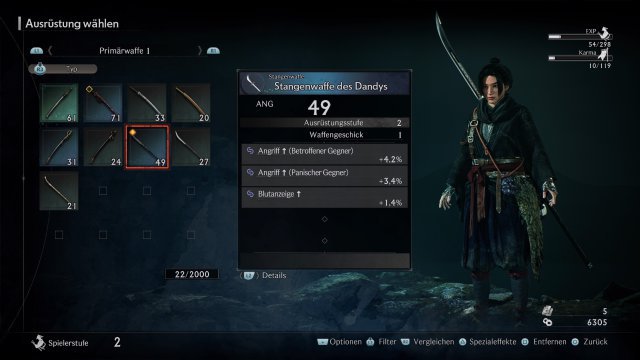
Even though you're in danger of drowning under an avalanche of weapons in Rise of the Ronin, only the different categories differ.
Also in the weapons available You can expect similarities and differences: Both games feature different types, including swords, spears or double blades. But while in Rise of the Ronin all representatives of a category play exactly the same and only differ from each other in terms of values and appearance, two similar weapons can be used in Elden Ring completely different skills bring along.
If Elden Ring places even more emphasis on challenging you with distinctive movesets from your opponents, Rise of the Ronin will do so multiple fighting styles Each type of weapon is more complex, each offering advantages and disadvantages against certain types of enemies – quick decisions are required here so that you use the correct stance. Our look at the combat system of the two competitors is rounded off by the various ranged combat options: Rise of the Ronin relies on bows and arrows as well as guns and shurikens, while Elden Ring wants to tempt you with a whole range of different spells and incantations.
What classic Soulslike mechanics are there?
Last but not least, a few words about this Soulslike label mentioned at the beginning: Once published by the 2009 Demon's Souls and the one that followed two years later Dark Souls From Software is of course indirectly responsible for the term itself – even if they don't like to use it internally. Elden Ring obviously has many, apart from the step away from the partly convoluted, partly interconnected levels towards the open world these genre-defining properties inherited from the spiritual predecessors.
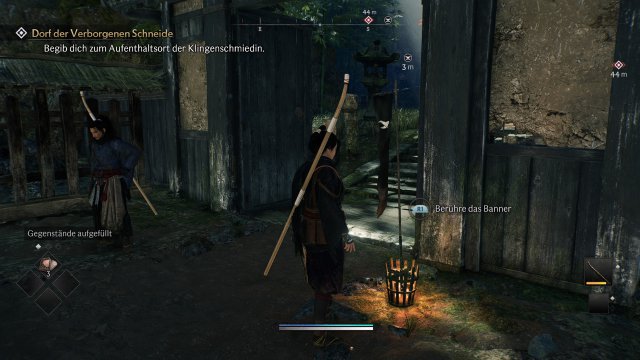
The banners are similar to the Places of Grace from Elden Ring: if you rest here, some enemies will be revived. Healing items will also be replenished, but only if there are any in your storage.
But while the two Nioh parts are at the forefront of Soulslike imitators for many fans Rise of the Ronin no longer takes genre affiliation so seriously. The greater focus on stealth is more reminiscent of Assassin's Creed or Sekiro: Shadows Die Twice and Difficulty levelsselectable from the start and clearly with the idea of accessibility behind it, ensure that Rise of the Ronin increasingly moves away from games like Elden Ring and is more similar to the classic action-adventures from Sony.
But a few similarities still remain. Next to the Stamina bar, which determines how many actions you can carry out and thus prevents you from mindlessly pressing buttons, such as save points. The ones here as Hidden cutting banner Designated locations resurrect enemies and replenish your items with supply items. You will also appear here if you have died – after you have received yours, of course Experience points currently collected are lost have.
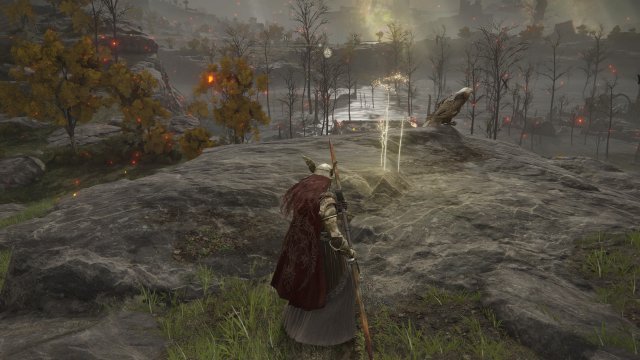
If you die in Elden Ring, your runes land on the ground as golden branches and can then be collected again – unless you die again first.
Just like with Elden Ring, you can collect again, even if they are not waiting for you as a puddle at the place of your death. Instead, you have to defeat the enemy responsible for your death, or at least give him a critical hit. So you notice: Part of the Nioh or Soulslike identity is clearly still there, but Rise of the Ronin has nevertheless developed in a different direction. If you still need help getting started, we suggest five particularly strong attributes in the game.
